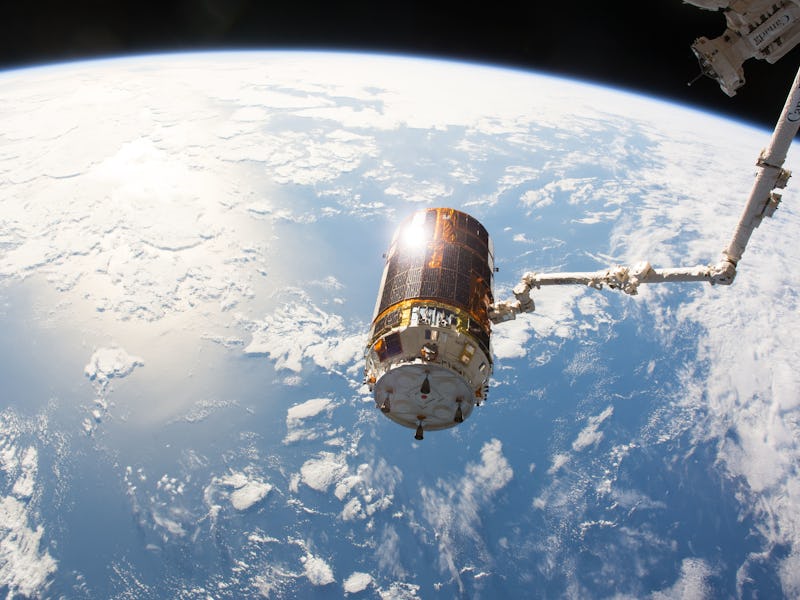Failed Japanese Space Junk Experiment Plunges Back to Earth

A Japanese “white stork” spacecraft tried to test out technology to clear space junk from Earth’s orbit. But the experiment failed, and the spacecraft intentionally incinerated in Earth’s atmosphere on Sunday before plunging down over the Pacific Ocean.
Before the HTV-6 spacecraft’s fiery end, it spent a week orbiting the Earth to test out the Kounotori Integrated Tether Experiment (KITE), or technology for removing space junk. But during the one-week window before HTV-6 was due to reenter Earth’s atmosphere, the experiment never worked.
The Japan Aerospace Exploration Agency (JAXA) reported last Tuesday that KITE failed its first test because a glitch prevented it from deploying its 2,300-foot long electrodynamic tether, made for snatching space junk out of orbit before pulling it down into Earth’s atmosphere to be incinerated.
“We believe the tether did not get released,” leading researcher Koichi Inoue told reporters. “It is certainly disappointing that we ended the mission without completing one of the main objectives.”
Right now, there are more than 100 million pieces of space junk flying above us that built up after more than 50 years of space exploration, including bits of rockets and old satellites. If KITE worked, it could help prove a method for reducing the risk posed by orbital debris. Unfortunately, the agency continued to test KITE until Sunday, to no avail.
HTV-6 did succeed in its supply mission, though. Last December, HTV-6 delivered five tons of food, water, clothes, science experiments, and other supplies to the International Space Station (ISS). Before departing on Jan. 27, it spent 45 days there while crew members unloaded the supplies and filled it with trash.
JAXA calls HTV-6 Kounotori, or “white stork” in Japanese, because of HTV-6’s role in delivering treasured cargo. At about six metric tons, it has the largest loading capacity of any cargo ship in the world.
This was a crucial supply run because a Russian cargo spacecraft headed for the ISS exploded, losing air purification hardware, medical gear, 700 lbs of food, nearly 1,000 lbs of water, and even clean underwear.